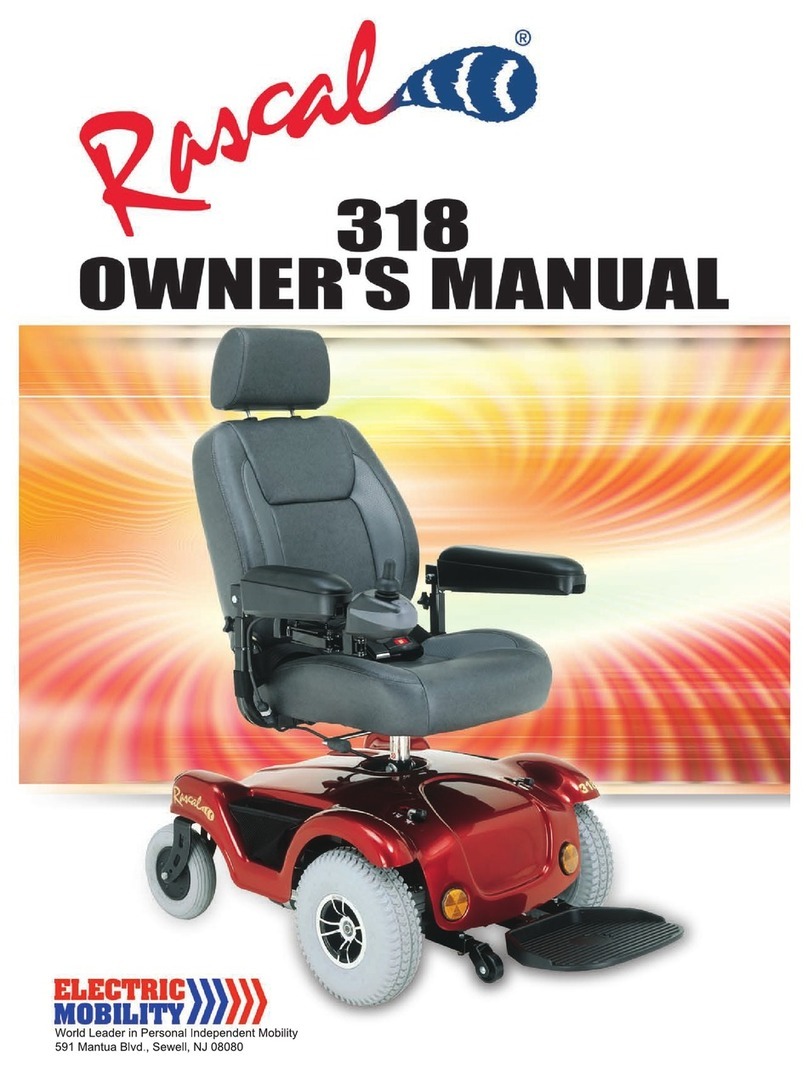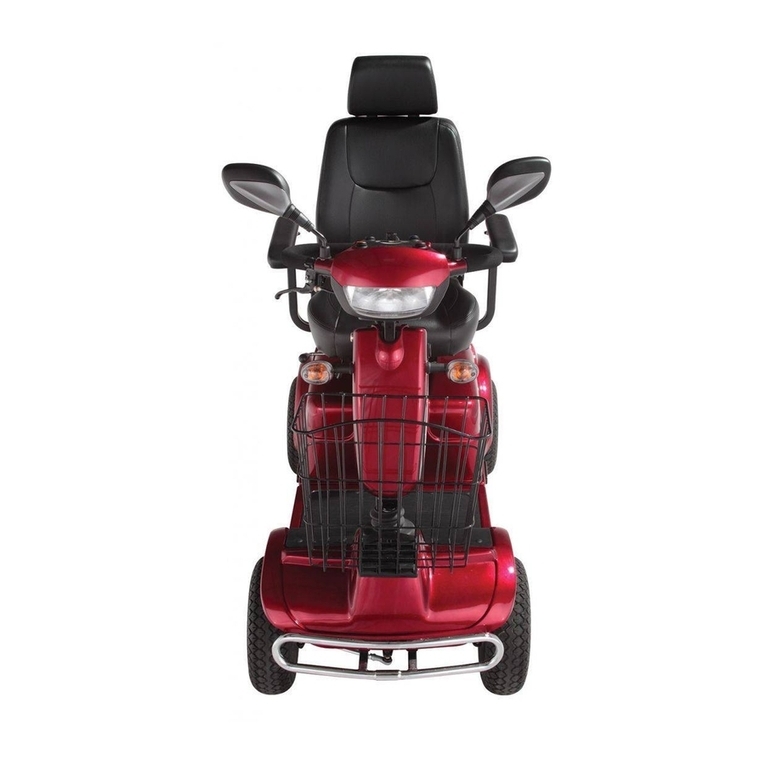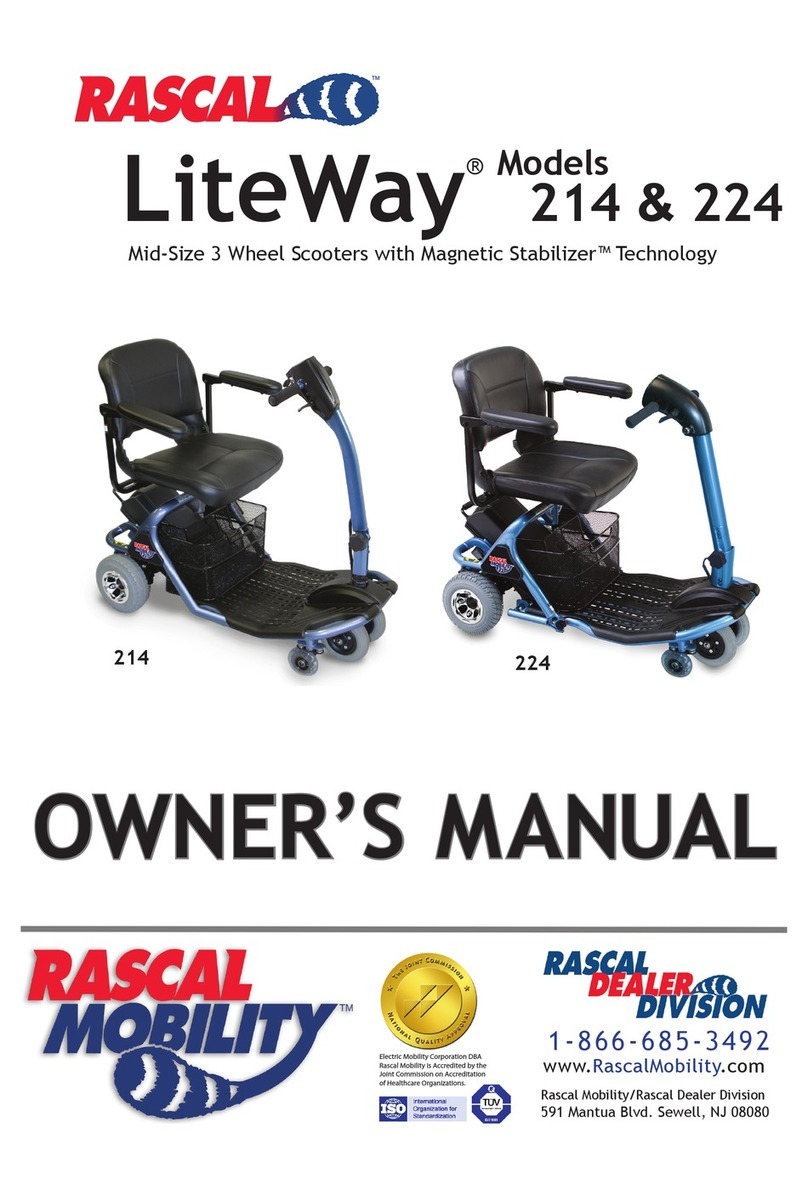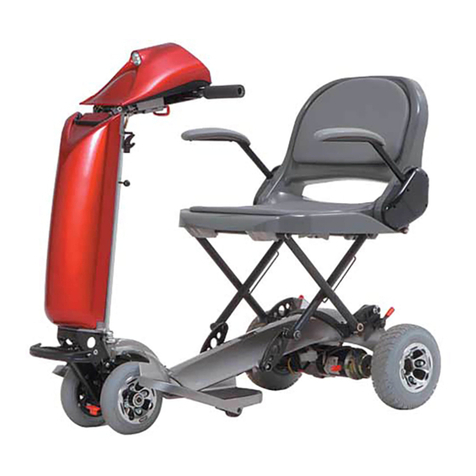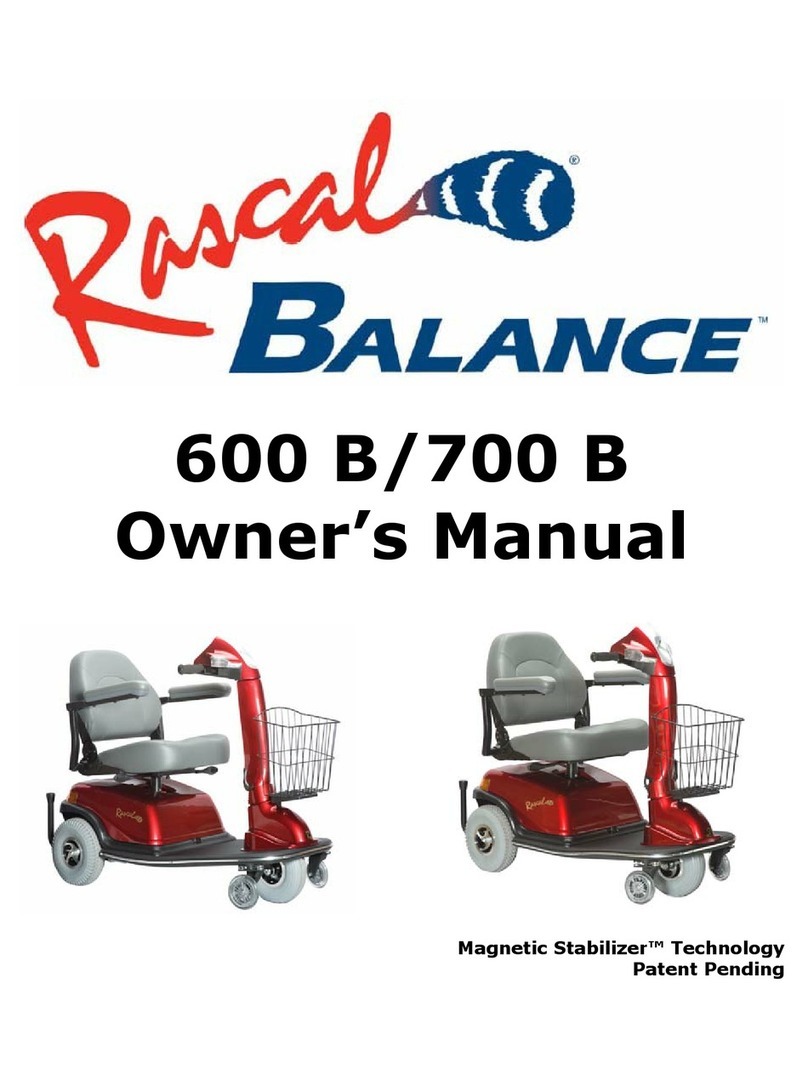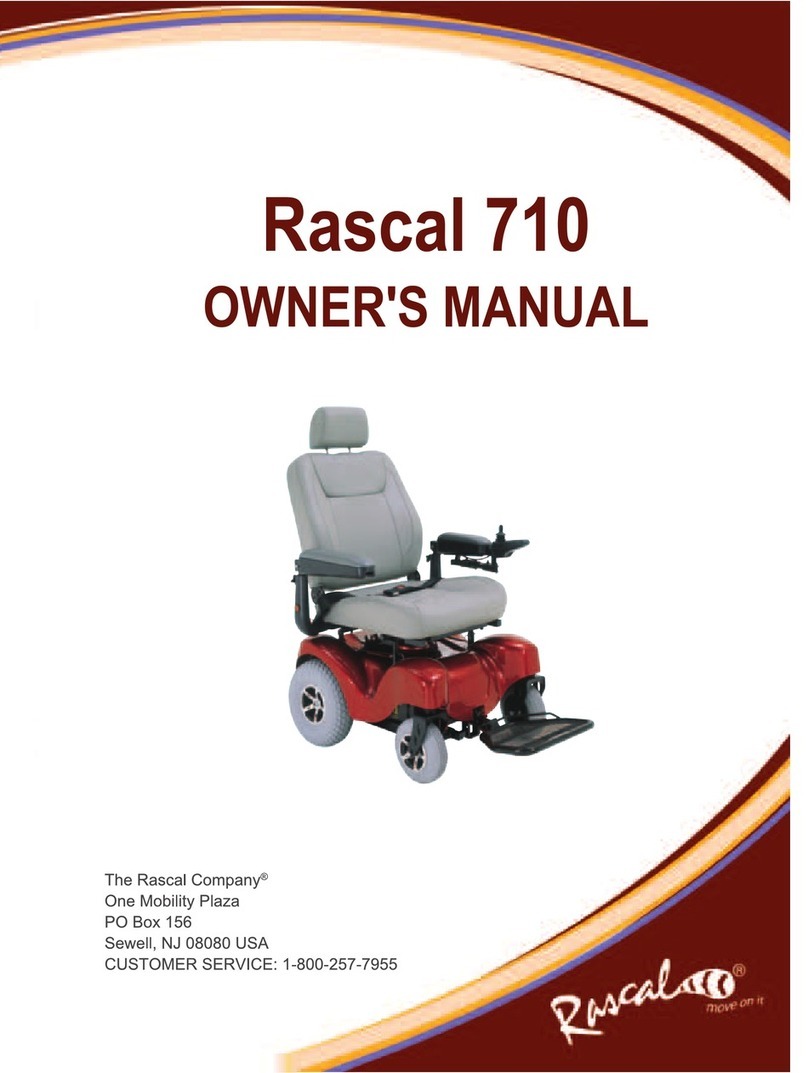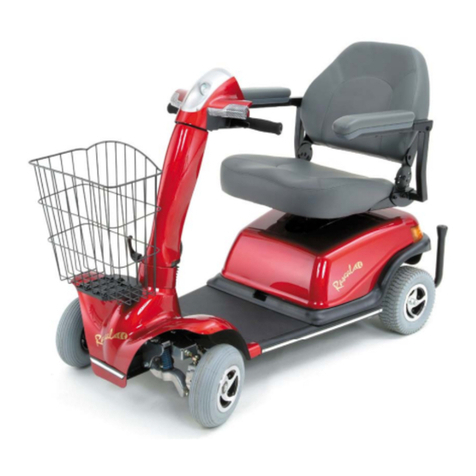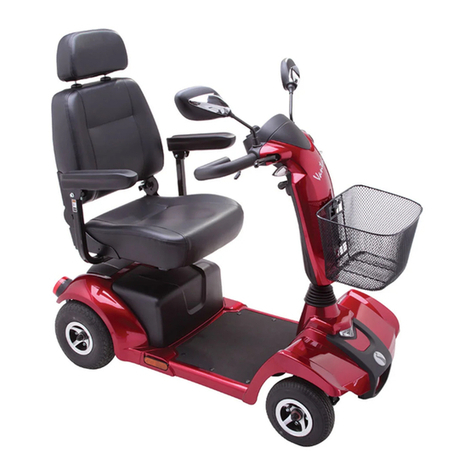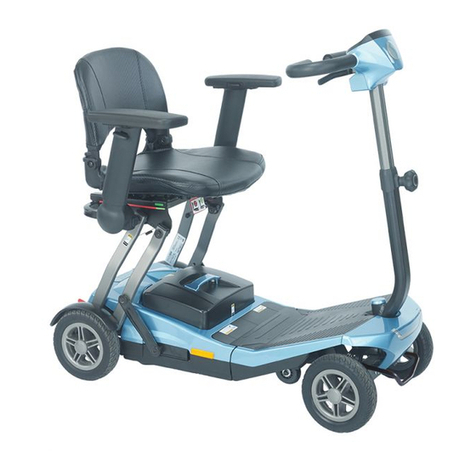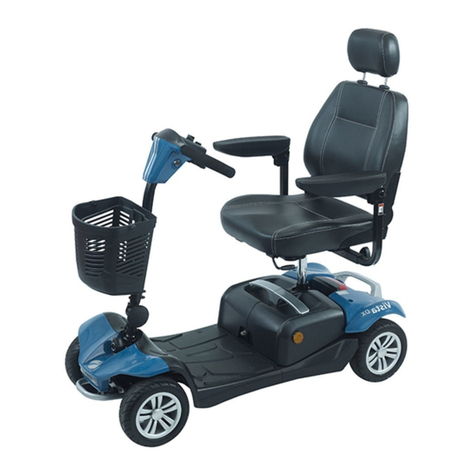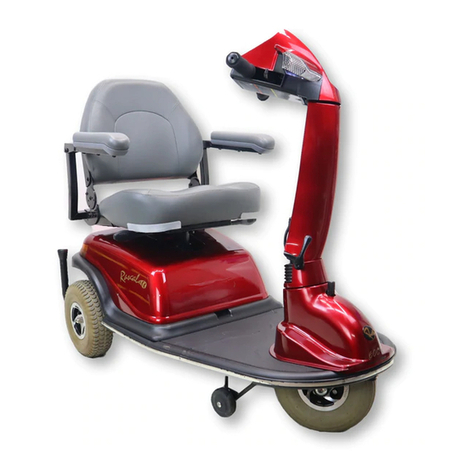6Rascal Ventura Scooter Owner's Manual and Service Record
Safety Information
General Warnings
Warning ! The operation of scooters can endanger the life of the driver or third parties. Any driver should
always be fully capable of operating this vehicle safely.
Warning ! Sitting for long periods may increase the chance of thromboses or pressure sores. Users prone to
such conditions are advised to take medical advice.
Warning ! The Rascal Ventura scooter has been designed and tested for drivers with weights up to those in
the Technical Specification Sheets. These weights should never be exceeded.
Warning ! Do not exceed the specification; do not modify this scooter or use it other than as a scooter.
Warning ! Passengers including children should never be carried.
Warning ! Electromagnetic interference may affect the driving of this scooter:
• Do not operate devices such as CB radios or mobile phones while the vehicle is switched on.
• Avoid getting close to transmitter masts such as television and radio stations.
If your vehicle ever starts to operate by itself switch it off and report this to your Dealer.
Warning ! The operation of any scooter may affect sensitive electronic circuits such as alarm systems or
automatic doors in shops.
Driving
Before riving, refer to ”Driving Your Vehicle” … later in this manual
Warning ! Ambient Operating Temperature Range. Do not use your scooter in temperatures outside the
range stated in the specifications section of this manual. Driving in very hot or very cold conditions
can make driving more hazardous.
Warning ! Freewheel Device/Mo e. Before getting on your scooter always check that the freewheel lever is
in the Drive position. When the freewheel lever is in the freewheel position the main brakes on your
scooter will not function. Extra care should be taken with your scooter when it is in freewheel
mode as it could move without warning. You must never sit on or try to ride your scooter when it is
in freewheel mode as serious injury or death may result.
NEVER SIT ON THE SCOOTER WHEN IN FREEWHEEL MODE.
Warning ! Transferring On an Off. Do not attempt to get on or off your scooter unless it is switched off at
rest and on a stable level surface. Never get on or off on a hill.
Warning ! Damage. Before driving off check the scooter for damage particularly that which could affect the
controls wheels freewheel function and/or drive motor.
Warning ! Footrest. Before switching on the scooter always make sure that your feet are safely on the
footrest areas. If you drive forward with your feet still on the ground they could become trapped
under the scooter and serious injury may result.
Warning ! Armrests. Do not use the armrests as a support for your entire weight when getting in or out of
the scooter. Make sure the armrests are lowered and secure before you start off otherwise you may
fall out.
Warning ! Entanglement. Do not wear clothing or carry items on the scooter that could become entangled in
wheels or other moving parts whilst operating the scooter. Severe injury may result.

